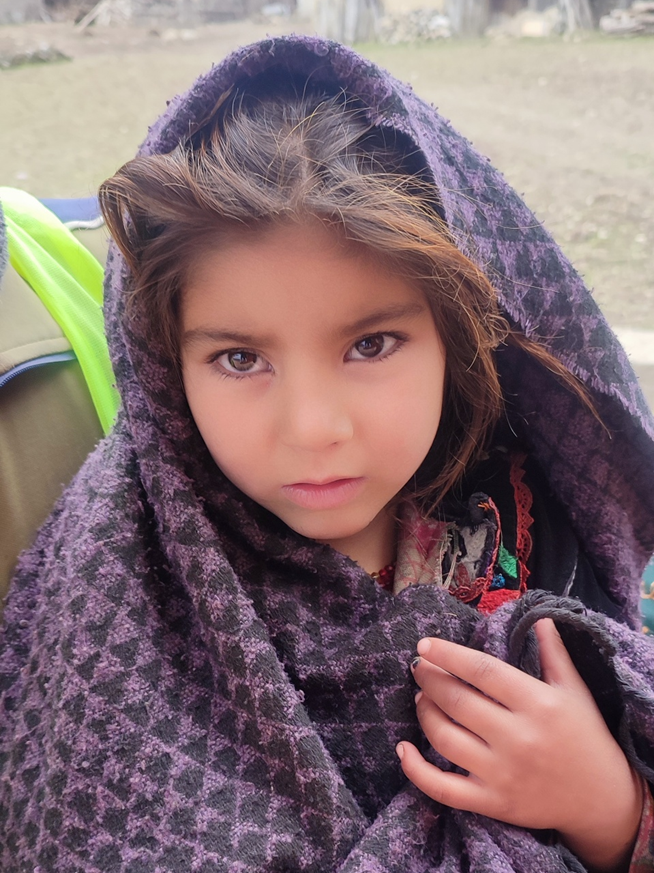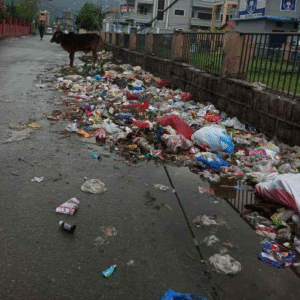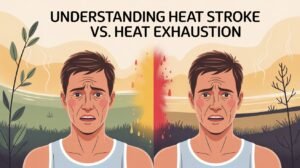Neelum Valley is the largest district in Azad Jammu and Kashmir, with a cover area of 3,621 square kilometres with a population of around 191,251 people, according to the 2017 census. While its natural beauty is undeniable, this mountainous valley faces serious challenges, including deforestation and climate change, which have led to unpredictable rainfall, landslides, and flash floods. These environmental changes threaten agricultural and livestock activities, which are the only source of income for many families, pushing them deeper into poverty.
Its remote location and rugged terrain make life difficult, especially regarding healthcare and access to proper medical facilities. Due to ongoing war conflict and environmental degradation, many people in Neelum Valley find themselves displaced and living in challenging conditions, with limited access to essential services like education, healthcare, and proper job opportunities.

The valley’s infrastructure is weak due to years of cross-border tensions and conflicts, which are making the lives of residents miserable and vulnerable. With only one road connecting Neelum Valley to other districts, residents face significant challenges in accessing necessary medical care, particularly for serious health issues that require urgent attention.
The healthcare infrastructure in Neelum Valley includes the District Headquarters (DHQ) hospital in Athmuqam, the Tehsil Headquarters (THQ) hospital in Kel, and several Basic Health Units (BHUs) located in different regions. However, due to the ongoing Kashmir conflict, many of these facilities are not fully functional. The valley lacks specialized hospitals, forcing locals to travel to Muzaffarabad for basic and secondary healthcare services. Unfortunately, most of the time, it becomes quite a challenge, especially during winters, or during times of conflict or natural disasters such as floods and landslides.
"After the last flood, our BHU was buried under mud," recalls a community health worker, Shumaila from Jagran*. "For months, pregnant women delivered at home with no help. Some didn’t survive."

Women living in the high-altitude villages of Neelum Valley face severe health, hygiene, and malnutrition challenges due to economic instability and environmental degradation. Cut off by rugged terrain and frequent landslides, they struggle to access healthcare, with many clinics lacking female staff, medicines, and proper facilities.
"We have a BHU in our village, but there’s no female doctor, no medicines," says 28-year-old Ayesha Bibi from Sharda. "When my daughter had a high fever, we had to carry her for hours to Kel. By the time we reached, her condition had worsened."
Poverty forces families to prioritize food over medical care, leaving women vulnerable to untreated infections, anemia, and complications during pregnancy.
“My husband is a daily wage worker. If he doesn’t work, we don’t eat,” says 30-year-old Naseema*. “Last year, I had a severe infection, but we spent our savings already on my mother-in-law’s medicine, so I could not have been treated properly.”

Without clean water or proper sanitation, women endure urinary tract infections (UTIs) and skin diseases, while the unavailability of affordable sanitary products makes menstruation a painful and shameful experience. The lack of menstrual hygiene products is a significant issue. Many women use unhygienic alternatives, which can lead to infections and other health complications. The absence of clean washrooms in many homes only adds to the problem of menstrual hygiene.
"We wash and reuse the same clothes, but sometimes there’s no clean water," says 16-year-old Sana. During winter, the water freezes, and we can’t dry them properly. Many girls skip school because of shame and pain.”
Climate change has worsened women’s struggles—heavy rainfall and flash floods destroy crops, causing food insecurity and malnutrition. The reddened cheeks of many women signal severe iron deficiency, yet nutritious food remains scarce. Trapped in a cycle of hardship, these women battle daily for survival, their suffering unseen behind the valley’s stunning beauty.
“We eat what we grow—mostly potatoes and maize. Fruits and meat are rare,” explains 40-year-old Zubaida*. “After my fifth child, I became so weak I couldn’t walk for months. The doctor said I had no blood left.”
Even when medical help is available, most families can’t afford it. The few medical stores in the valley charge higher prices for basic drugs, forcing women to rely on ineffective home remedies.
The red cheeks of women and girls are a sign of iron deficiency anemia. With limited food supply and poor nutrition, pregnancies become high-risk, and fatigue is a constant companion due to the heavy workload of household responsibilities.
“We need support. Our voices need to be heard. If we have access to health education and the right resources, we can take better care of ourselves and our families, pleaded Momina.”
To improve healthcare in Neelum Valley, the government, the health sector, and NGOs need to take several key actions. Firstly, better healthcare facilities must be established to provide essential medical services for the local community.
Additionally, clean drinking water should be made available to everyone to prevent stomach diseases. Basic medicines must be stocked in medical stores at subsidized rates to ensure affordability. Healthcare workers should receive training in local languages to deliver proper and effective care to residents. Transportation options must also be improved so that people can reach hospitals quickly and without difficulty. Finally, health education programs should be implemented to raise awareness in the community about good health practices, hygiene, nutrition, and overall wellness. These measures will significantly improve healthcare access and quality for the people of Neelum Valley.




